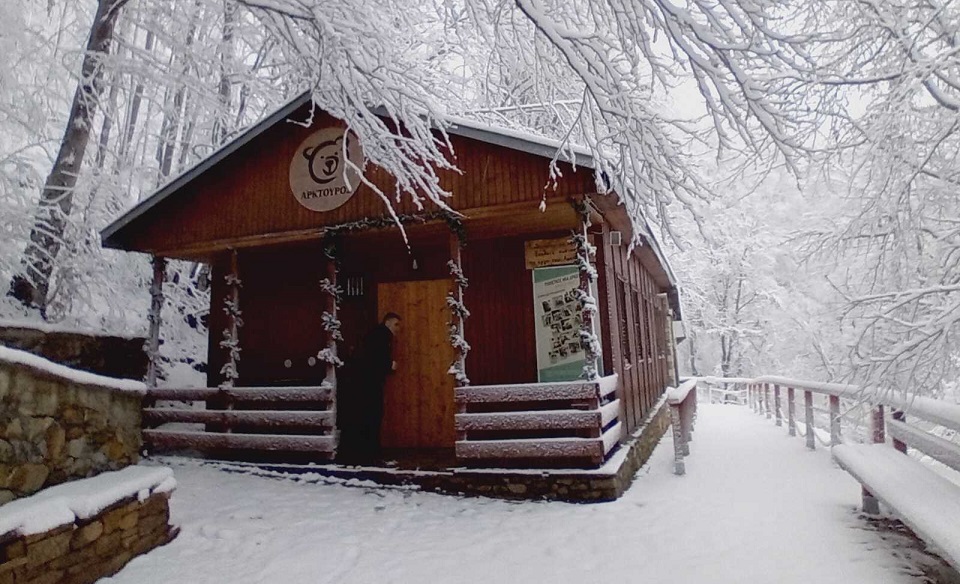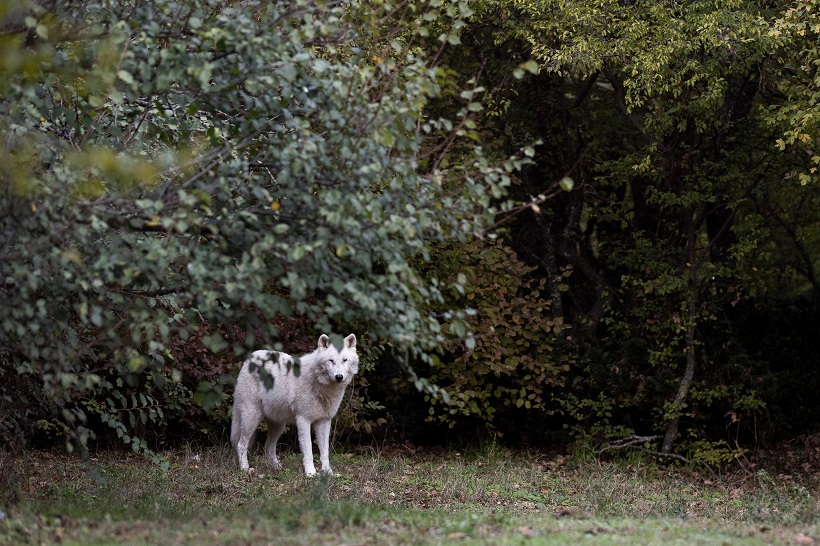
Brown bears in the region of Florina in northern Greece went into hibernation earlier than any previous year in the thirty-year history of the Arcturos preservation center.
“The snow sent the bears to sleep,” the non-governmental organization posted on Facebook, announcing that the Bear Conservation Area in the village of Nymphaeon was closed on December 17th for the hibernation period until March, so as to allow the bears to hibernate undisturbed.
However, visitors to the area during the winter may still visit the Bear Information Centre in Nymphaeon as well as the Wolf and Lynx Conservation Area in nearby Agrapidies.
A cold habitat for local wildlife
The region of Florina, home to Arcturos’ wildlife preservation areas, is among the coldest areas of Greece. The capital city of Florina, a popular winter tourism destination, has always been one of Greece’s coldest inhabited places, and is definitely its coldest major city.
Temperatures often drop below fourteen degrees Fahrenheit (-10°C), and snow is more often seen there than anywhere else in the country. Florina also holds Greece’s all-time record-low temperature of -20 degrees Fahrenheit (-29°C), which was recorded just a few years ago.
The densely forested area surrounding the city constitutes an optimal habitat for local wildlife. Each of the twenty-one bears that live in Arcturos’ preservation area near the picturesque village of Nymphaeon, has been registered and classified by the environmentalist team.
“Bear activity within the Centre had decreased significantly lately, and the elderly like Sasha and Alexandra had retired to their dens since the beginning of December,” Arcturos says.
“Irini, Sandy, and Mira preferred to sleep in natural dens, which they carefully laid with leaves and branches, while several, such as Tasoula, Barbara, and Kyriakos, chose the artificial nests,” Arcturos explained.
Nonetheless, Arcturos extends its invitation to local and international visitors to experience the unique nature of Florina and learn about its wildlife. “The bears may have gone to sleep, but the wolves and lynxes will be waiting for you,” a spokesperson of the organization noted.

Brown bear populations in Greece
According to Arcturos, in Greece there are an estimated 450 bears, living in two independent populations, which are not geographically linked. The largest population lives in the Pindos Mountains, while the Rhodope Mountains are also home to quite a large population.
Additionally, in recent years, there has been consistent evidence of the presence of bears in the mountain axis of Vora in Olympus and Central Greece—even down to the mountainous Nafpaktia, an area where there have been no sightings in the last seventy years.
The organization was founded in 1992, with the aim to address the problem of bear and wolf imprisonment, which was a common occurrence at the time. Within a year of its establishment, special wildlife sanctuaries pertaining to former bears and wolves in captivity were being run.
See all the latest news from Greece and the world at Greekreporter.com. Contact our newsroom to report an update or send your story, photos and videos. Follow GR on Google News and subscribe here to our daily email!



